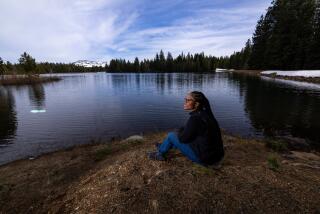Big Farm in State Gives Land to B of A to Pay Debt
- Share via
New evidence of the severity of the farm debt crisis in California surfaced Wednesday as it was learned that one of California’s largest family-owned farming companies has signed over 40,000 acres of its land to Bank of America to settle most of its debt with the bank.
However, Salyer American, founded in 1921 by farmer E. Clarence Salyer, will lease back the land in the central San Joaquin Valley and continue to farm and manage it along with 27,000 acres it retains. About half of Salyer American’s plantings are in cotton, and the remainder in feed grains and seed alfalfa.
The move adds still more property to the books of troubled Bank of America, whose farm land holdings in California have risen sharply during the past few years.
Rick Denmark, head of special credit for Bank of America in the San Joaquin Valley, told the Associated Press: “We’re going to try to sell the (Salyer) property as quickly as possible.” The land is valued at between $90 million and $100 million, he said.
The bank currently owns about 200,000 acres of California farmland, including the Salyer holdings, Denmark said.
“We have, in a single bold stroke, retired more than 85% of our total debt while maintaining our ability to grow, process and aggressively market commodities,” Scott Salyer, vice president and a grandson of the founder, told employees in a statement.
The company, based in Corcoran south of Fresno, declined to elaborate on the amount of its remaining debt and the terms of its agreement with Bank of America. A spokeswoman for Salyer American said the action helps the company in its goal to be “self-financed” and “it was not a situation of default at all.”
Salyer American has estimated annual revenue of more than $50 million. The bank deal does not involve Salyer Fresh Foods, a Salinas-based fresh vegetable grower and marketer, which was spun off into a separate company in 1986.
Farmers throughout California borrowedly heavily at high interest rates against their land holdings in the late 1970s and early 1980s, when their export business was booming. But those exports plummeted after 1982 because of a strong dollar. As a result, farmers were left with surplus crops, low prices and big loan payments.
Many farmers lost their land through foreclosures or have signed over their deeds to repay their debt.
A newly released survey of agricultural loans by the California Bankers Assn. showed that as of December, 1986, banks owned 261,000 acres of California farmland, which is about 0.8% of all agricultural land in the state.
More to Read
Inside the business of entertainment
The Wide Shot brings you news, analysis and insights on everything from streaming wars to production — and what it all means for the future.
You may occasionally receive promotional content from the Los Angeles Times.










